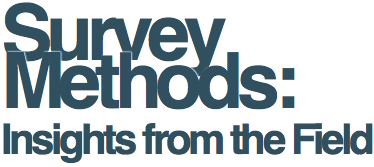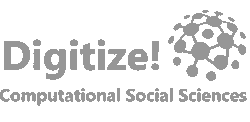Volume 3, issue 1 (2025)
Is it Helpful to Include QR Codes on Mail Contact Materials for Self-Administered Web Surveys?
The Healthy Chicago Survey (HCS) is a self-administered, multimode survey conducted annually on a random sample of Chicagoans aged 18 years or older. The survey uses an address-based sampling frame and offers both web and paper modes, with a Choice+ data collection protocol offering a higher promised incentive for completing by web. Overall, about 90% [...]
health survey, online survey methods, QR codes, survey methods, web survey,
Effects of mode and incentives on response rate, sample composition, and costs – experience from a self-administered mixed-mode survey of movers
Using incentives to reduce unit nonresponse in surveys is an established practice, with prepaid incentives being particularly effective in increasing participation rates. In this paper, we investigate how incentives affect participation rates and sample composition in an offline-recruited mixed-mode survey (concurrent paper/web and push-to-web), using an experimental design. We conducted a survey on residential satisfaction [...]
cost-efficiency, incentives, Response bias, response rate, sample composition,
Who chooses a QR code over a URL to access a web screener in a national probability survey of older adults, and the impact on data quality
There has been limited research on the impact of the inclusion of a quick response code (QR) code option on recruitment to a web screening survey, and on data quality when a screening instrument can be either self-administered or interviewer-administered. As part of a screening effort to recruit a new birth cohort to a long-standing [...]
data quality, Health and Retirement Study, QR code, QR code choice, web screening survey,
Does matching interviewer and respondent gender improve data quality and reduce social desirability bias? Evidence from a mobile phone survey in India
Gender matching between interviewers and respondents has been used to improve survey quality. Research on interviewer gender effects from the United States and Europe finds that men respondents are sometimes more likely to report conservative attitudes to men interviewers than women interviewers. This study from a phone survey in India does not find that men [...]
gender attitudes, india, interviewer gender, social desirability, survey methods,






